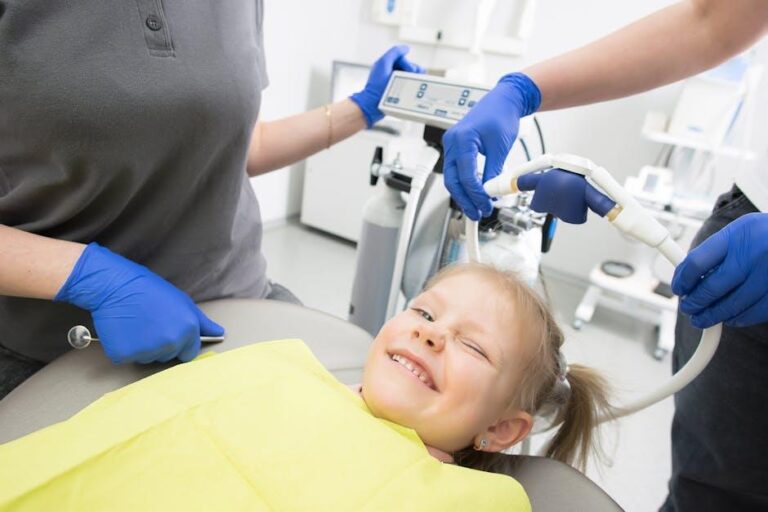1 in 3 Kids Has Dental Problems, Poll Finds – U.S. News & World Report
Dental health is a critical aspect of overall wellbeing, especially for children. However, recent findings from a U.S. poll reveal a concerning statistic: one in three children in the United States suffers from dental problems. This alarming rate highlights the urgent need for awareness and proactive dental care among parents and caregivers. In this article, we’ll explore the causes of this statistic, symptoms to watch for, and effective strategies to ensure your child’s smile stays healthy.
Understanding the Scope: What Does the Poll Say?
The U.S. News & World Report poll surveyed thousands of parents nationwide, uncovering that about 33% of American children have experienced dental problems such as cavities, gum disease, or tooth pain at some point. The most common dental issues identified include:
- Tooth decay (cavities)
- Gingivitis (early gum disease)
- Dental trauma and enamel erosion
- Malocclusion or misaligned teeth
These challenges not only cause discomfort but may also impact a child’s nutrition, self-esteem, and school performance.
Why Are Childhood Dental Problems So Common?
Several factors contribute to the high prevalence of dental problems among children. Understanding these causes can help parents take preemptive steps:
1. Poor Oral Hygiene Habits
Many children either don’t brush or floss regularly or don’t do so effectively. Lack of supervision or education on proper brushing techniques can exacerbate the problem.
2. High Sugar Consumption
Diet plays a pivotal role in dental health. Frequent consumption of sugary snacks, sodas, and processed foods creates an acid attack on tooth enamel, resulting in cavities.
3. Limited Access to Dental Care
Economic and geographic factors limit routine dental visits for some families, leading to untreated problems that worsen over time.
4. Insufficient Fluoride Exposure
Fluoride strengthens teeth and prevents decay. Children without adequate fluoride, either from water or dental products, are at higher risk.
Signs Your Child May Have Dental Problems
Early detection can save your child from pain and costly dental interventions later. Watch for these symptoms:
- Persistent toothache or sensitivity
- Visible holes or brown spots on teeth
- Red, swollen, or bleeding gums
- Difficulty chewing or eating
- Bad breath that doesn’t go away
- Lumps or sores inside the mouth
Practical Tips to Prevent Childhood Dental Problems
Prevention is always better than cure. Here are actionable steps parents can follow to safeguard their children’s oral health:
| Tip | How It Helps |
|---|---|
| Brushing Twice a Day | Removes plaque and food particles that cause decay |
| Flossing Daily | Clears debris between teeth unreachable by brushing |
| Regular Dental Check-ups | Professional cleaning and early problem detection |
| Limiting Sugary Snacks & Drinks | Reduces acid attacks and cavity risk |
| Using Fluoride Toothpaste | Strengthens enamel and prevents decay |
| Encouraging Water Intake | Helps rinse mouth and maintain saliva production |
The Role of Schools and Communities
Communities and schools play a vital role in combating this dental health crisis. Many school-based programs provide free or low-cost dental screenings and education to kids. Awareness campaigns targeting parents can also make a significant difference. When communities prioritize dental health, children receive the message early that their smiles matter.
Case Study: A Family’s Journey to Overcoming Childhood Cavities
Meet the Johnson family from Ohio. Both parents work full-time, and like many, they didn’t realize the signs of their 7-year-old Emma’s poor dental health until she complained of a toothache.
- Initial Problem: Several untreated cavities and gum inflammation.
- Action Taken: A visit to the pediatric dentist, improved brushing routines, and dietary changes.
- Result After 6 Months: Emma’s dental health improved dramatically with no new cavities and healthier gums.
The Johnson family’s experience underscores how small changes and early intervention can reverse dental issues in children.
Benefits of Healthy Teeth in Children
- Proper Nutrition: Healthy teeth allow children to chew properly and digest food effectively.
- Better Speech Development: Teeth help with clear pronunciation and language skills.
- Higher Self-Confidence: A beautiful smile promotes social acceptance and confidence.
- Lower Healthcare Costs: Preventive care reduces expensive dental procedures later.
Final Thoughts
The statistic that 1 in 3 kids in the U.S. suffers from dental problems is a call to action for parents, caregivers, schools, and communities alike. With consistent oral hygiene practices, healthier eating habits, and regular dental visits, these problems can be significantly reduced. Remember, investing in your child’s oral health today leads to brighter, healthier smiles—and a happier, healthier childhood.
Don’t wait until discomfort arises. Start good dental habits early and prioritize those checkups—you’ll thank yourself (and your child will too) for years to come!


